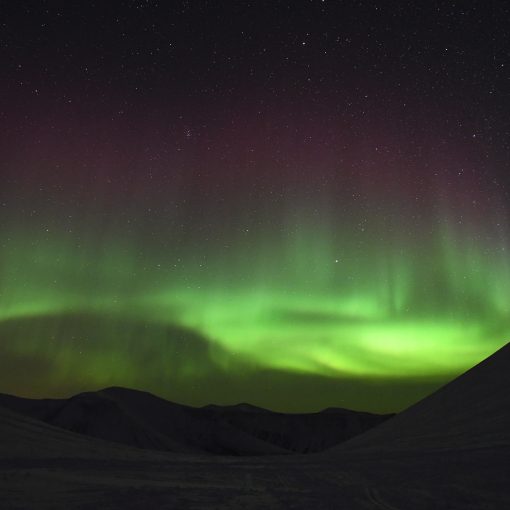The past few weeks have been spent gaining a thorough understanding of waste water management systems, Adventfjorden as a recipient, and possible solutions to the challenges of waste water pollution. This post will explain the conditions in Adventfjorden and summarize the conclusions from earlier seabed studies.
Adventfjorden is a 7 km long and 3–5 km wide fjord on the southern side of Isfjorden, Svalbard’s largest fjord system. The two largest rivers, Adventelva and Longyearelva, plus numerous of other streams contribute a substantial amount of melt water from the surrounding glaciers and as well as a large amount of inorganic sediments deposits. According to a 2013 report by Akvaplan-Niva, the addition of these sediments dilute the organic nutrients in the water, especially in the innermost part of the fjord. In 2004, Zajaczkowsk et al. conducted a study focusing on the sediment deposits. They found that the first kilometer of the seabed from the estuary has a decline of 0,1%, which after 500 meters shifts to a more rapid decline of 8–10%. The sedimentation deposits were calculated to be 1,87 cm/year down to a depth of 60 meters, and 0,87 cm/year at depths of 80 meters. With increasing temperatures and melt water outputs, the authors predict that the sedimentation will increase and ultimately change the salinity and sediment composition in the fjord. This might pose a greater risk for the benthic fauna in Adventfjorden, in particular molluscs and other soft tissue organisms.
Since 2010 the total amount of organic input in the fjord has increased due to the direct release of untreated sewage and to the compulsory installation of food waste grinders in all households. However, studies have shown low to moderate effects of the release waste water, although one sample area showed negative impacts after the sewage pipe outlet was moved in 2008. If negative consequences are left to develop over time, the seabed can potentially reach anoxic conditions which can cause a range of cascade effects in the marine ecosystem. Ultimately, if the negative effects are shown to increase over time, measures will have to be taken to reduce the anthropogenic impacts and reestablish natural conditions.
This spring a new sediment and fauna study will be carried out in efforts to monitor the conditions and determine what measures need to be taken in order to keep the negative environmental consequences to a minimum.

References:
Akvaplan-Niva. 2013. Adventfjorden som resipient for sanitæravløp og kvernet matavfall fra Longyearbyen. https://www.lokalstyre.no/fagrapporter.488045.no.html
Akvaplan-Niva. 2018. Biological health status in Adventfjorden, as a recipient of human waste including ground food remains (biohealth Adventfjorden). https://www.researchinsvalbard.no/project/8819
Zajączkowski et al. 2004. Recent changes in sediment accumulation rates in Adventfjorden, Svalbard. OCEANOLOGIA, 46 (2), p. 217 –231.




